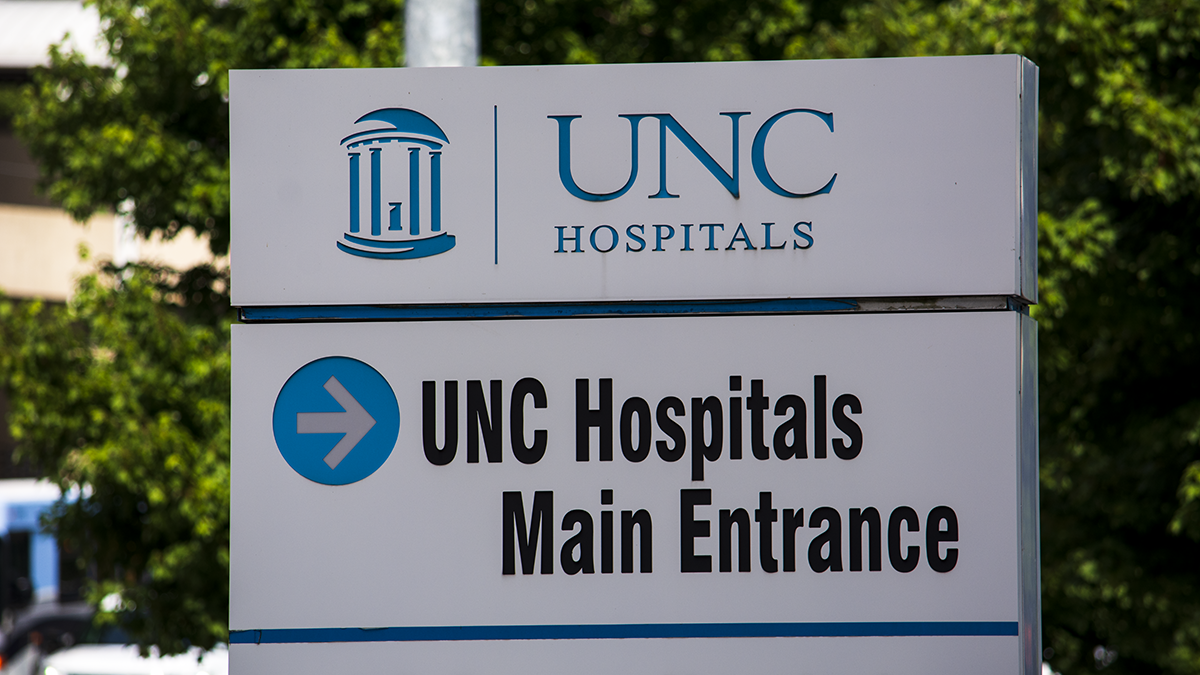UNC Health Care and four other major North Carolina health care systems will join with Blue Cross and Blue Shield of North Carolina to adopt a new, alternative model of care that they hope will cut down on inefficiency, lower costs and improve care for patients.
The Blue Premier program, which was unveiled at the Blue Cross headquarters in Durham on Tuesday, is a value-based care model that changes the way hospitals and doctors are reimbursed for services they provide to patients.
Previously, healthcare providers were reimbursed using a fee-for-service payment model. That meant every service rendered to a patient, every office visit or procedure, was billed separately. As a result, healthcare experts say, fee-for-service payment models incentivize quantity over quality.
At the press conference announcing Blue Premier, BCBSNC President and CEO Patrick Conway acknowledged the wider issues facing healthcare in this country.
“Our top priority is the health of the people we serve,” he said. “And let’s face it, our health system -I think we can all agree- is not delivering the best kind of outcomes at the lowest cost.”
He said this new program represents one of the most comprehensive shifts to value-based payments methods in the nation. And with hundreds of thousands of customers under the five participating health systems, that’s no exaggeration. BCBSNC said they wanted to have all of their customers covered under Blue Premier contracts in the next five years.
CEO of UNC Health Care Dr. Wesley Burks said at the announcement that this new program brings new changes for UNC patients. But importantly, he noted, it doesn’t change the ability of patients to see their preferred primary care physician.
So what will patients notice that is different? Better communication between their different providers, Burks said.
“That will feel different for them. It will take them a while to feel that, but they will see that difference in communication that will allow them to experience that better patient experience. That will allow them to have better outcomes eventually. That will allow them, again, to lower their costs.”
Related Stories
‹

UNC Hospitals Recognized for Best Maternity CareUNC Hospitals in Chapel Hill was one of six UNC Health facilities across the state to be recognized in U.S. News & World Report’s 2026 list of Best Hospitals for Maternity Care. The list named all six UNC Health hospitals as “high performing,” which is the highest award a hospital can earn as part of […]

UNC Hospitals Receives Top National Ratings for Quality and SafetyUNC Hospitals in Chapel Hill was one of three hospitals affiliated with UNC Health to receive top five-star ratings from the Centers for Medicare and Medicaid Services (CMS), which measures both quality and safety for consumers. Only 290 hospitals across the country earned five-star ratings from CMS, eight of which are in North Carolina. UNC […]

U.S. News & World Report Ranks UNC Hospitals No. 2 in North CarolinaThe latest “Best Hospitals” list from U.S. News & World Report ranked UNC Hospitals as the No. 2 hospital in the state of North Carolina. Four specialties within the hospitals received national rankings as well: Cancer – No. 48 Ear, Noes & Throat – No. 44 Urology – No. 31 Rehabilitation – No. 46 Five […]

Comprehensive Down Syndrome Clinic Opens at UNC Hospitals to Help Optimize Patient CareFriday marks the opening of UNC Health's Down syndrome clinic in Chapel Hill, which will provide holistic and specialized care to patients.

Innovative UNC Hospital Program Uses Students To Fill Health Care GapsThe course Biology 119, Experiencing Health Professions, trains UNC undergraduate students to serve as sitters for hospital patients.

New UNC Health Surgical Tower Completes First Operations, Officially OpensThe North Carolina Surgical Tower, which is part of the UNC Health system, saw its first surgeries in the building performed on Monday.

UNC Hospitals Receives 5-Star Rating in New StudyUNC Hospitals in Chapel Hill was one of three UNC Health hospitals and 14 in the state of North Carolina to receive a five-star rating from the Centers for Medicare and Medicaid Services. The CMS system measures hospital quality and safety. “UNC Health strives to lead the way in providing the very best care to […]

North Carolina Court Throws Out Conviction of Man With Guns Inside Car on CampusAn appeals court said a North Carolina man living in his car was wrongfully convicted when he parked near UNC Hospitals in 2021.

UNC Hospitals Named One of World's Best Hospitals in 2024UNC Hospitals in Chapel Hill earned a spot on Newsweek’s “World’s Best Hospitals 2024” list last week. It’s one of three UNC Health institutions to be named to the list, along with UNC Health Rex in Raleigh and UNC Health Johnston in Smithfield. Fourteen total hospitals in the state of North Carolina are included on […]

UNC Surgical Hospital Sets Opening Celebration for April 19The UNC Health system sent out a save-the-date message to partners on Wednesday for the opening of the seven-story surgical hospital.
›








